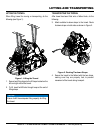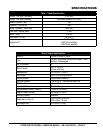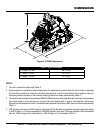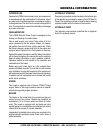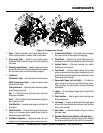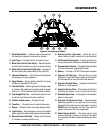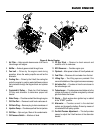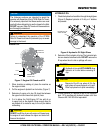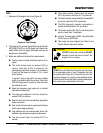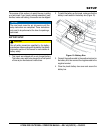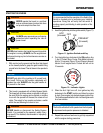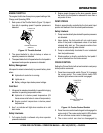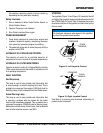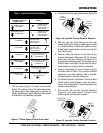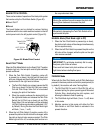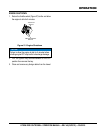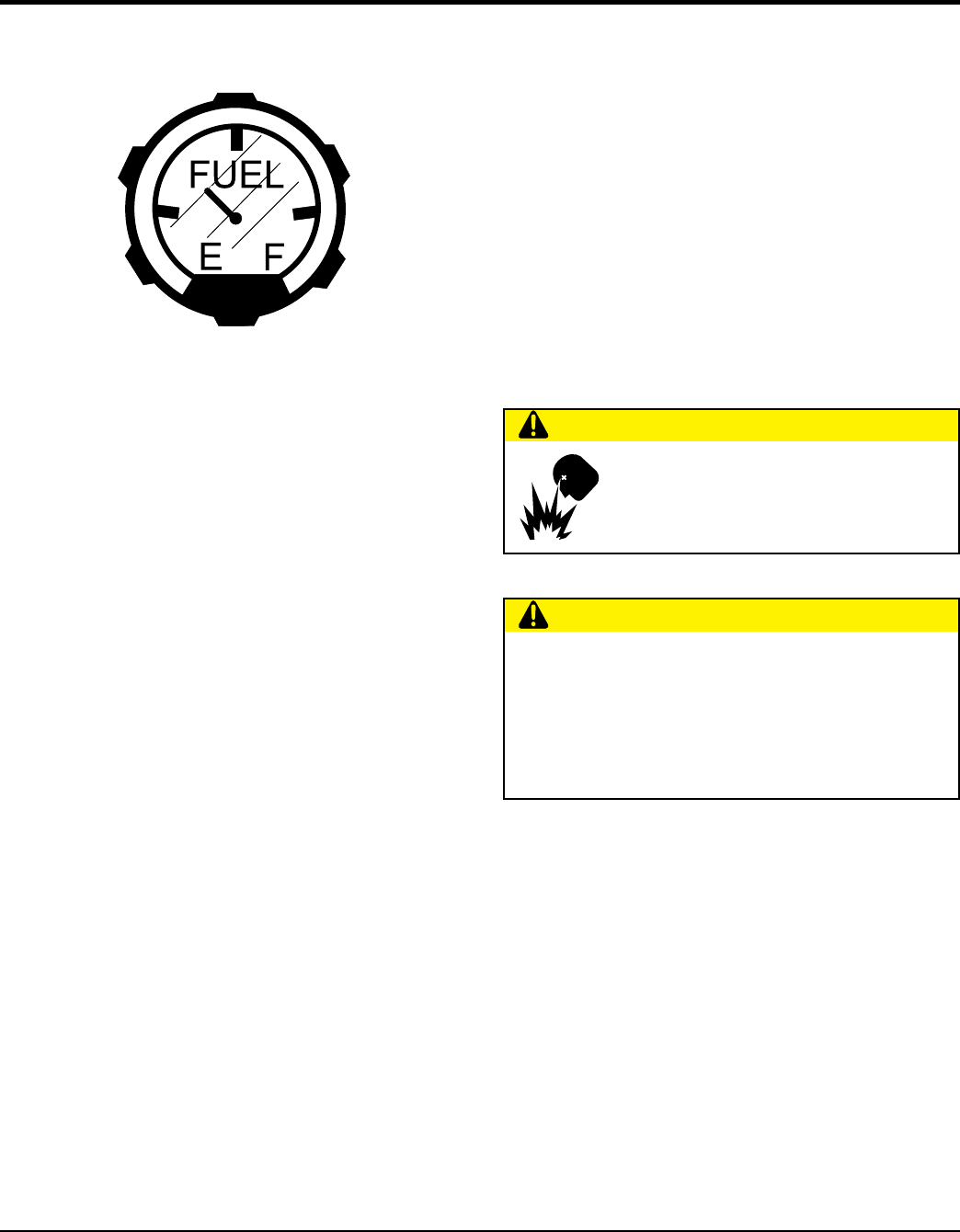
PAGE 22 — HTXD6i RIDE-ON TROWEL• OPERATION MANUAL — REV. #0 (03/23/12)
INSPECTION
FUEL
1. Determine if the engine fuel is low (Figure 9).
Figure 9. Fuel Gauge
2. If fuel level is low, remove the fuel filler cap and fill with
ASTM D975 No1D or No. 2D diesel fuel. Handle fuel
safely. Motor fuels are highly flammable and can be
dangerous if mishandled.
3. Below are additional technical fuel requirements:
The fuel cetane number should be equal to 45 or
higher.
The sulfur content must not exceed 0.5% by
volume. Less than 0.05% is preferred. For
electronically-controlled engines, it is mandatory
to use fuel that does not contain 0.1% or more
sulfur content.
In general, using a high sulfur fuel may possible
result in corrosion inside the cylinder. Low sulfur
(300-500 mg/kg sulfur content) or ultra low sulfur
fuel should be used.
Never mix kerosene, used engine oil, or residual
fuels with the diesel fuel.
The water and sediment in the fuel should not
exceed 0.05% by volume.
Keep the fuel tank and fuel-handling equipment
clean at all times.
Poor quality fuel can reduce engine performance
and/or cause engine damage.
Fuel additives are not recommended. Some fuel
additives may cause poor engine performance.
The ash content must not exceed 0.01% by
volume.
The carbon residue content must not exceed
0.01% by volume. Less than 0.1% is preferred.
The total aromatics content should not exceed 35%
by volume. Less than 30% is preferred.
The PAH (polycyclic aromatic hydrocarbons )
content should be below 10% by volume.
The metal content of Na, Mg, Si, and Al should be
equal or lower than 1 mass ppm.
Lubricity: The wear mark of WS1.4 should be Max
0.018 in (µm) at HFRR test.
This trowel can use biodesel fuel. Refer to the
Yanmar Service manual for details.
CAUTION
DO NOT smoke while refueling. DO NOT
attempt to refuel the ride-on trowel if the
engine is hot or running.
CAUTION
DO NOT store the Ride-On Trowel with fuel in the tank
for an extended period of time. Completely drain the
fuel system (tank, lines, etc.) if the unit is to be put into
long term storage. For shorter or intermediate periods
of time the tank should be filled to avoid condensation
that could cause contamination of the fuel.



